Most of us, if we’re familiar with Italian toy company Geoworld, are familiar with the extensive “Jurassic Hunters” line of dinosaur and Cenozoic mammal figures, or perhaps the “Jurassic Action” line of articulated figures. Many collectors have a low opinion of these figures due to their crude sculpts, uncredited accompanying artwork, or garish paint jobs. What if I told you that once upon a time, Geoworld made quirky and interesting products? Let’s take a look at what I think is the coolest thing they’ve ever sold.
The “Magnetic Jurassic Sea Creatures” set comes on a blister card, and unlike so many toy lines with “Jurassic” in the name, every genus included actually existed in the Jurassic. Besides the Geoworld logo, there’s also a “Geolinea” logo featuring a sauropod. I think Geolinea is just an imprint of the same company. Regardless, let’s open it up!

The first thing I noticed was the smell, an unpleasant odor like something burnt. I’m still not positive what it was, but the copyright date on the package is 2001. If that’s really when these were produced, it might just be 19 years of accumulated PVC and glue fumes. The plastic doesn’t show any tackiness or other signs of degradation, and the magnets are still firmly attached, so they don’t seem to have suffered from their long imprisonment. I’ve had these for about six months now, and the smell is almost undetectable now.
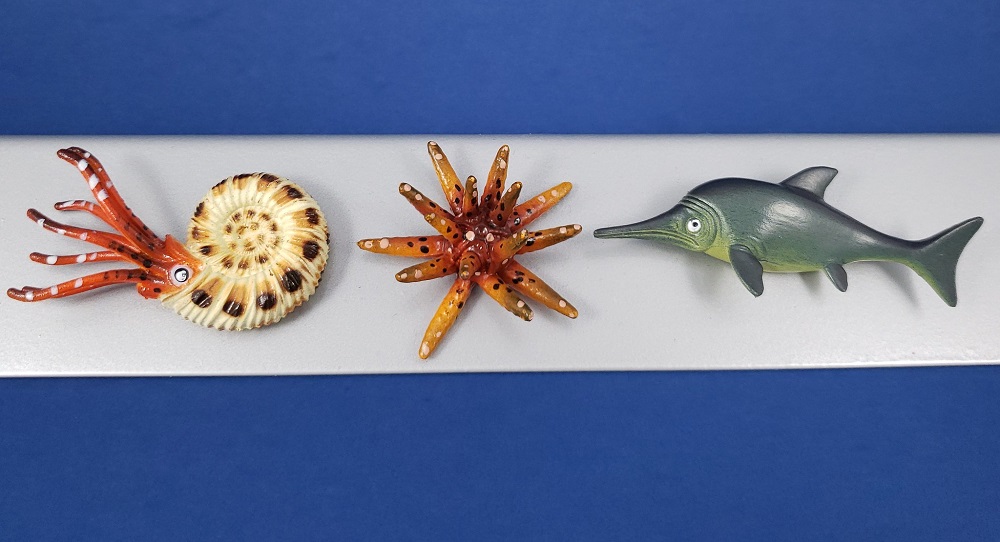
The most exciting of these three figures for me is the Cidaris, a slate-pencil urchin genus. Cidaris actually still has living members, but first appeared in the Jurassic. The most common remains are tests, the globular calcium carbonate shells that house most of the urchin’s body. The spines don’t usually preserve with the shell, since they are attached with ball-and-socket joints and tend to fall off at death. In slate-pencil urchins, the spines are few and thick, unlike in most urchins, whose spines are many and slender. This figure has a splotchy color scheme, which you could imagine represents algae or other organisms living on the spines.
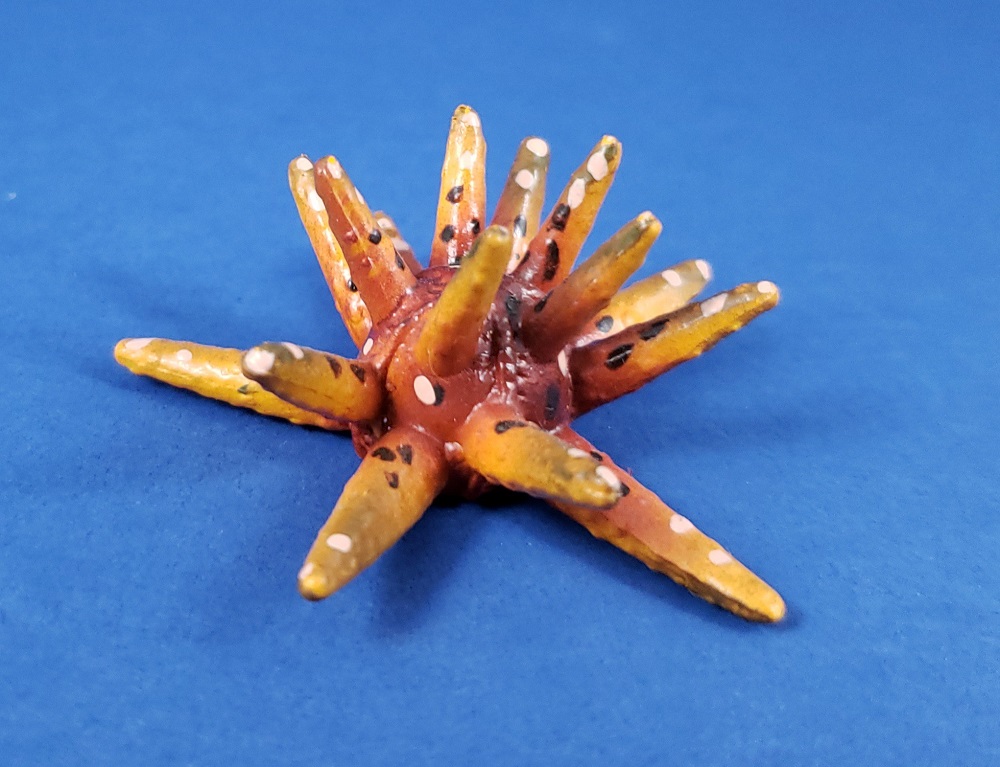
The Cidaris figure is the easiest one to work into an existing prehistoric display, because when you place it on a shelf, you can’t even tell it’s a magnet. It’s about 1:3 to 1:7 scale. Like the others in the set, the underside is stamped “Geoworld,” “CE,” and “©.” To be strictly accurate, it should probably have more spines, but honestly I think this figure is great for an inexpensive novelty magnet. To my knowledge, it’s also one of only two prehistoric echinoderm toys, a travesty for a group whose fossil record spans 500 million years. The only other one is Kaiyodo’s incredible Pleurocystites, which I’m just noticing that we have not reviewed, a situation I should remedy forthwith.

Next up is the ammonite Perisphinctes, a genus from the Middle and Upper Jurassic. A fair number of ammonite toys exist, but this is the first of Perisphinctes specifically. The sculpt is a little bit simple, and it is more likely that it had ten arms than eight, but again, this is an attractive little ammonite figure with a surprisingly detailed paint scheme. It’s about 1:6 or so, although specimens vary in size, so don’t fret if you want to include it in a diorama at a slightly different scale.
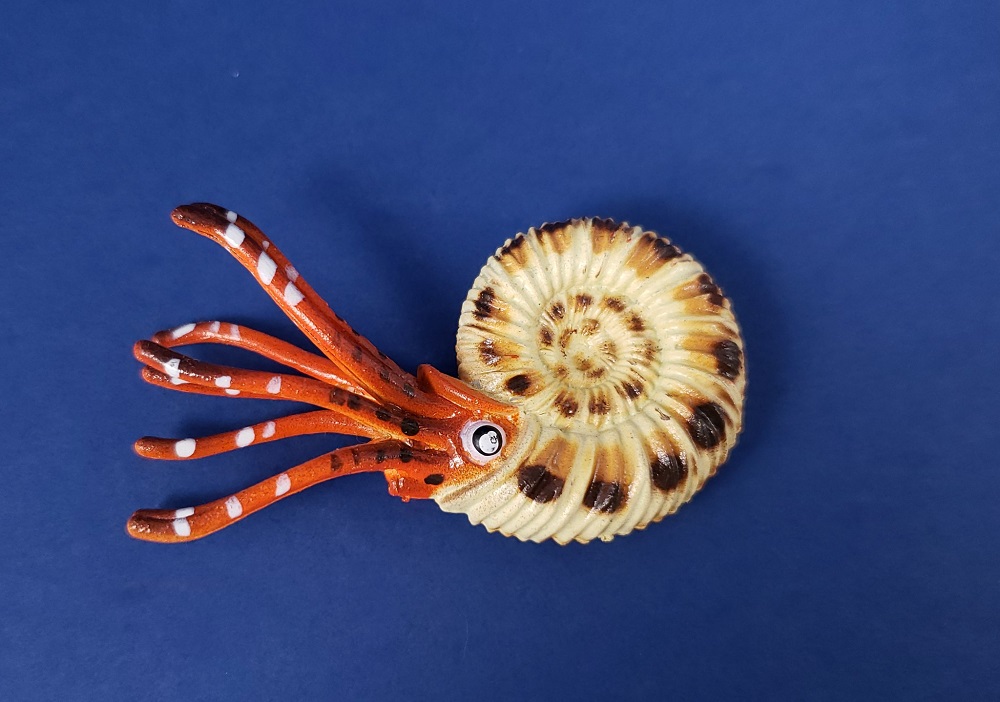
This figure is a little bit less versatile than the urchin in displays, but it does have the eye painted on the reverse. The nice banding on the shell is scarcely evident, however.
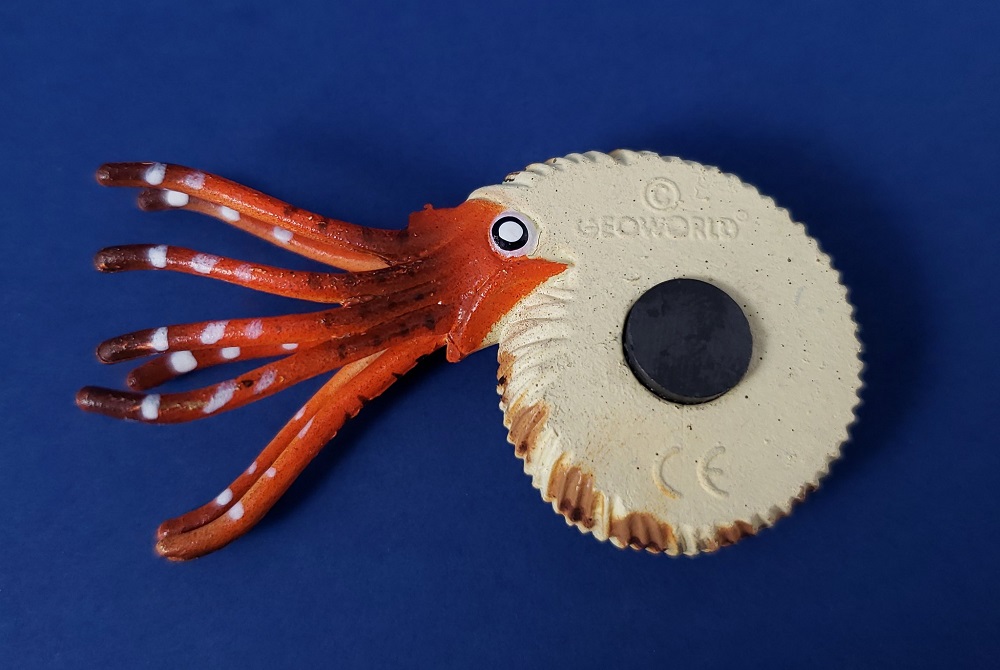
Finally, the only vertebrate in the set, Stenopterygius, an ichthyosaur genus from the Lower Jurassic. The old Royal Ontario Museum monochrome line included a Stenopterygius, and some figures labeled as Ichthyosaurus might be a better match for Stenopterygius, but this still isn’t a common genus in toy form. It’s definitely the homeliest piece in the set. The weirdly pronounced folds around the head/neck make it look more like a fish than an ichthyosaur. Still, it’s not the worst thing in the world, and I daresay it’s superior to some of Geoworld’s current offerings. It’s roughly 1:45, so it’s actually in scale with some of the other ichthyosaur figures on the market.
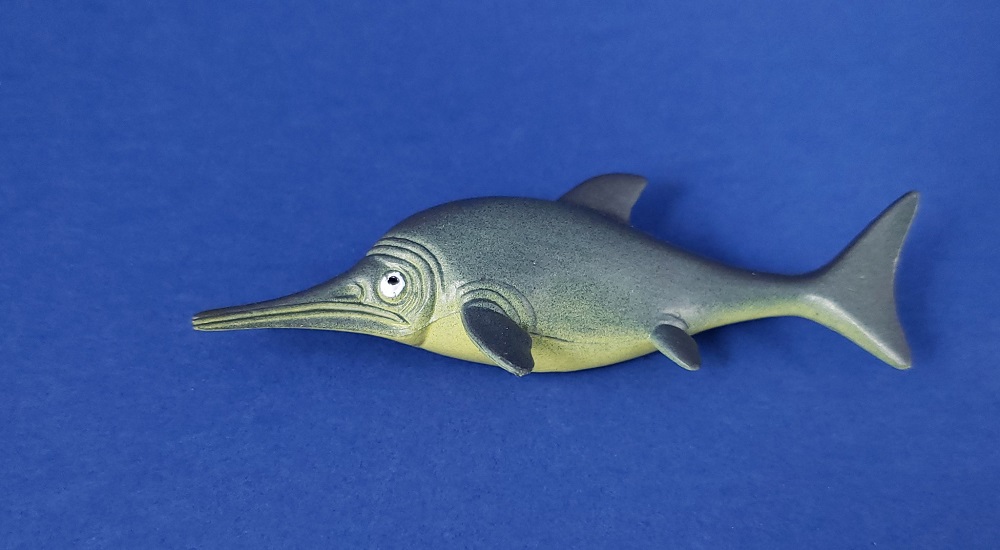
Like the ammonite, it has the eye painted on the reverse, and the mouth and nostril are sculpted in, but it lacks the right flippers and a big chunk of the torso. It works pretty well as a magnet, and it’s been holding a pandemic-delayed wedding invitation to my refrigerator for the last few months.
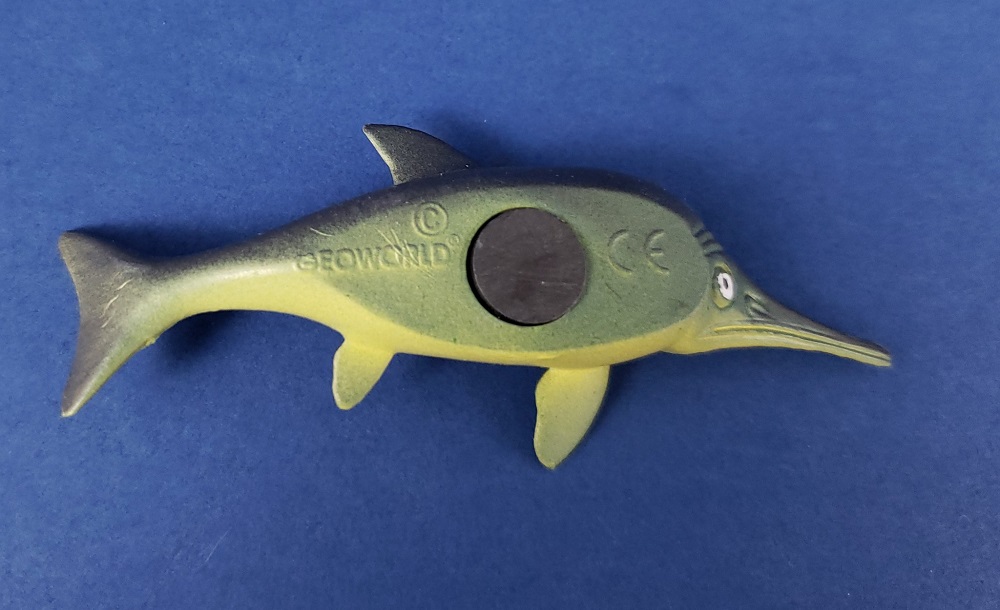
Overall, this set is my favorite Geoworld product. When an online acquaintance happened across these in a gift shop in Florida, I thought it might be something new and exciting from Geoworld. But it seems to be from long before the “Jurassic Hunters” line, so now it just makes me wistful for a bygone era I didn’t even know existed. I haven’t found any evidence that there were other magnet sets from Geoworld. But if you’re aware of any, please comment below, I’d love to know about it!
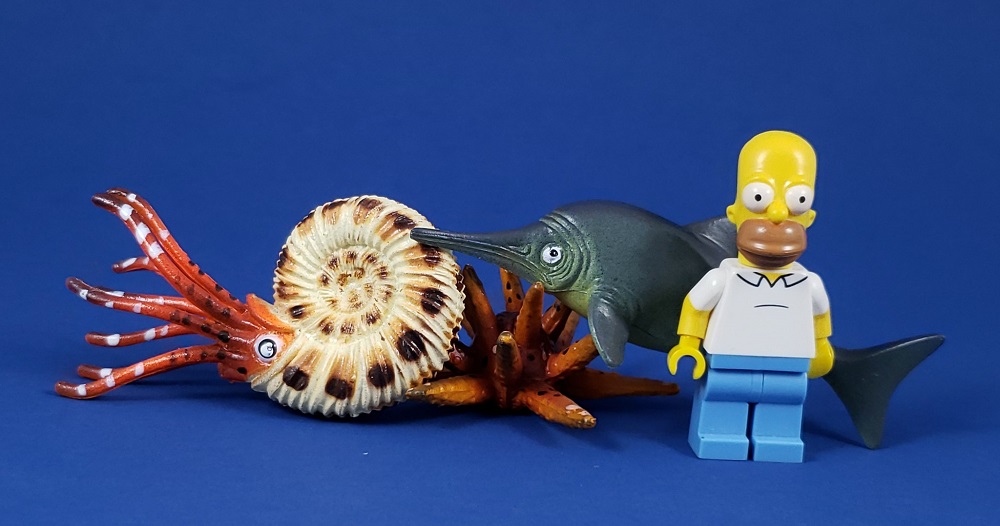
I highly recommend this set if you can find it, but I think that will be much easier said than done. I hope that Geoworld products can be this good again one day.

Disclaimer: links to Ebay and Amazon on the DinoToyBlog are affiliate links, so we make a small commission if you use them. Thanks for supporting us!




I like the packaging, I would probably not open it up.
It is attractive packaging! I kept the card, but I just can’t resist opening my toys. Would’ve made the review a little harder if I’d left them in, too! 🙂